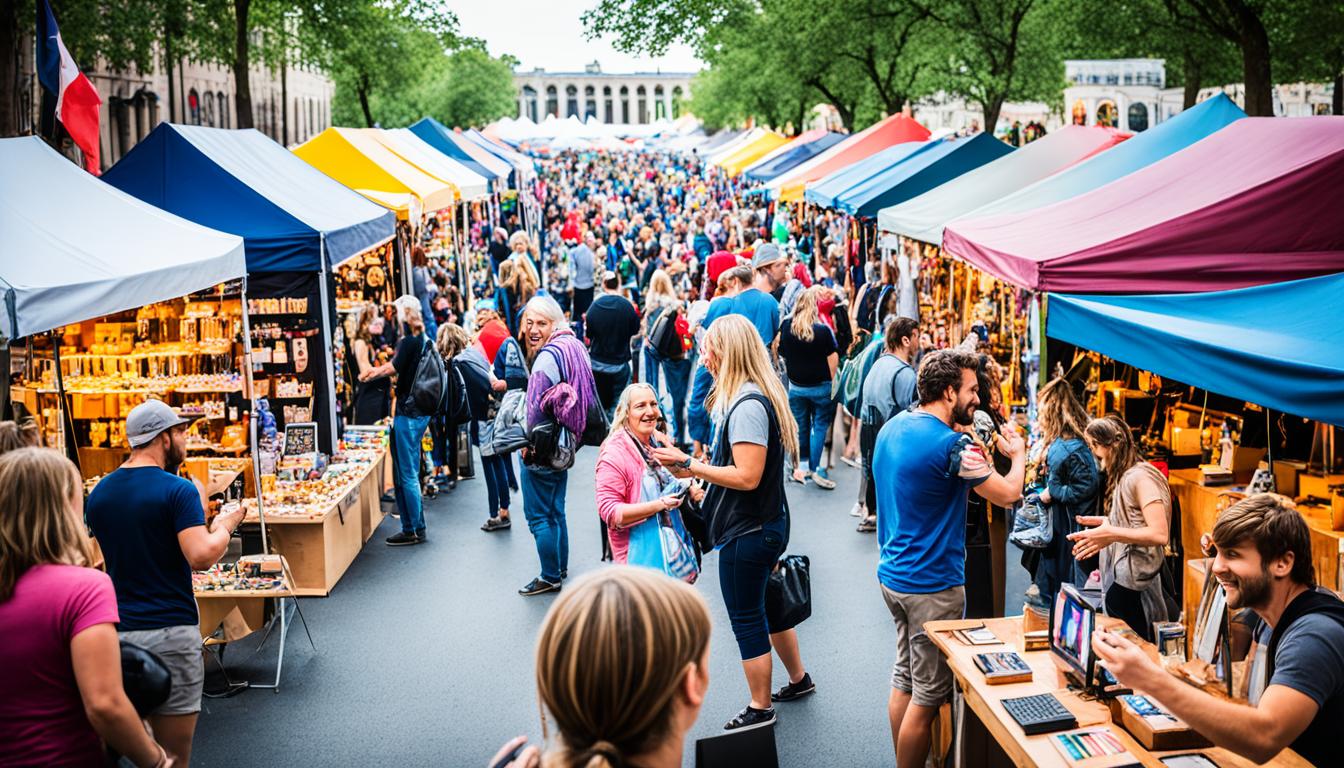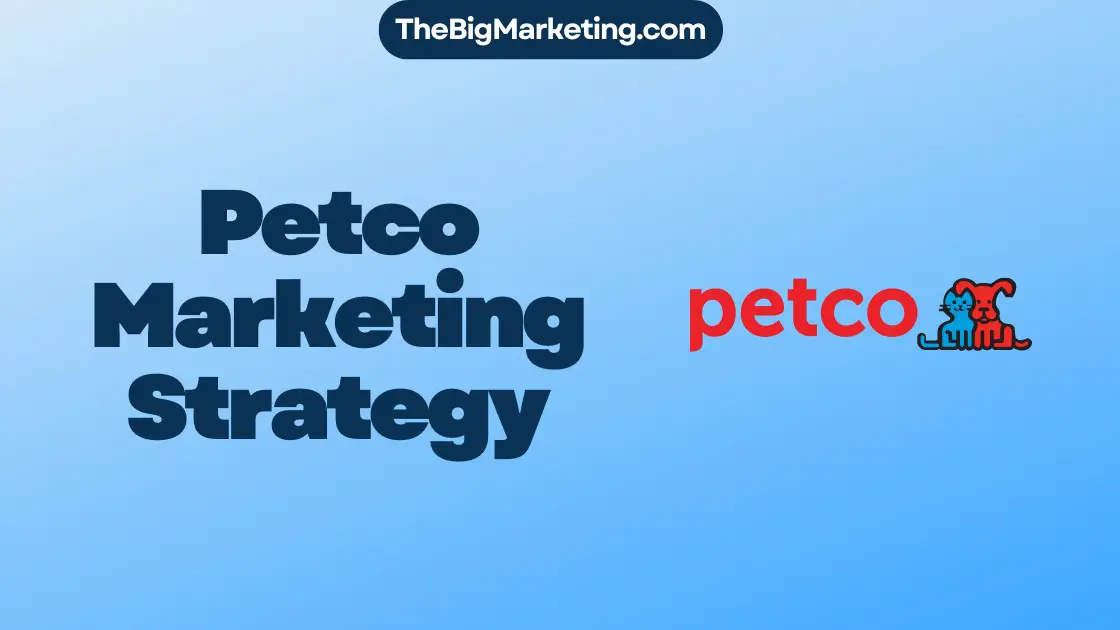Starbucks, the world’s largest coffeehouse chain, has established itself as a global leader in the coffee industry with its innovative marketing strategies. From targeting specific audience segments to expanding its digital presence, Starbucks has consistently evolved its marketing approach to stay ahead of the competition.
In this case study, we will examine Starbucks’ marketing strategy for 2024 and explore how the company has successfully built its brand, engaged with customers, and achieved global recognition. From product-based campaigns to corporate social responsibility initiatives, Starbucks utilizes various tactics to drive brand loyalty and expand its market reach.
Key Takeaways:
- Starbucks focuses on delivering a consistent, high-quality product and creating a unique customer experience.
- The company targets high-income spenders, urban professionals, technology early adopters, and health-conscious individuals.
- Starbucks entered the Indian market in 2011 and successfully positioned itself as a premium coffee brand.
- The brand’s marketing strategies include digital expansion, social media engagement, and product-based campaigns.
- Starbucks uses corporate social responsibility initiatives and community-based campaigns to enhance its brand reputation.
About the Company
Starbucks, the renowned coffee-house chain, offers a wide variety of hot and cold beverages, including whole-bean coffee, instant coffee, espresso, lattes, teas, juices, and pastries.
Operating globally, Starbucks has an extensive presence in over 80 countries. With its commitment to providing exceptional coffee experiences, the company has positioned itself as a leader in the industry.
Starbucks caters to different customer segments, including coffee enthusiasts, professionals seeking a caffeine boost, and individuals looking for a cozy environment to relax and savor their favorite beverages.
With a focus on quality and innovation, Starbucks has become synonymous with exceptional coffee and a unique customer experience.
Starbucks in India
In 2011, Starbucks made its official entry into the Indian market through a joint venture with Tata Consumer Products Limited. This strategic partnership allowed Starbucks to tap into the vast potential of the Indian market, known for its diverse culture and growing economy. By combining Starbucks’ global presence and expertise with Tata’s local knowledge and resources, the coffee-house chain aimed to establish a strong foothold in the country.
With a focus on targeting the niche upper-class segment in India, Starbucks positioned itself as a premium coffee brand. The company not only introduced its signature exotic coffee blends but also offered a unique experience for customers to relax and enjoy their beverages in a peaceful and ambiance-rich environment. This approach resonated well with the Indian consumers’ growing affinity for quality and experiential products.
Starbucks’ entry into the Indian market was met with enthusiasm and curiosity from both coffee enthusiasts and the general public. The brand’s dedication to sourcing high-quality coffee beans and its commitment to social responsibility struck a chord with the Indian consumers. As a result, Starbucks found success in capturing the attention and loyalty of the Indian consumer base.
The Growth of Starbucks in India
In the early years of its operations in India, Starbucks focused on establishing a strong presence in major cities like Mumbai, Delhi, Bangalore, and Chennai. The company strategically opened stores in upscale locations and partnered with popular shopping centers to attract its target audience of affluent consumers.
Over the years, Starbucks expanded its footprint and penetrated deeper into the Indian market by opening stores in emerging metro cities and Tier-II cities. This expansion was backed by the brand’s commitment to providing a consistent and high-quality experience to all customers, regardless of geographical location.
Localization and Innovation
To cater to the unique tastes and preferences of the Indian consumers, Starbucks added localized items to its menu. These included beverages like the “Tata T-20 Frappuccino,” inspired by India’s love for cricket, and the “Teavana Youthberry White Tea” with aromatic flavors appealing to Indian palates.
Additionally, Starbucks introduced innovative concepts such as Starbucks Drive-Thru and Mobile Order & Pay to enhance convenience for customers. These initiatives capitalized on the increasing urbanization and the rise of on-the-go consumption in the Indian market.
Building Deep Community Connections
As part of its marketing strategy in India, Starbucks actively engages with local communities and partners with non-profit organizations to support social causes. The brand collaborates with local artisans and suppliers, incorporating traditional Indian elements into its store designs and merchandise.
Furthermore, Starbucks promotes sustainability initiatives, focusing on responsible sourcing and waste reduction. Through partnerships with organizations like “Swachh Bharat Abhiyan,” Starbucks strives to create a positive impact on society and build lasting connections with its Indian customers.
Starbucks in India: Key Statistics
| Year | Number of Stores (in India) |
Market Share |
|---|---|---|
| 2011 | 1 | – |
| 2012 | 6 | – |
| 2013 | 30 | 16.80% |
| 2014 | 61 | 23.50% |
| 2015 | 84 | 28.50% |
Note: The table above represents the total number of Starbucks stores in India and their respective market share from 2011 to 2015. The market share data for the years beyond 2015 is not available at the moment.
Starbucks Target Market
Starbucks’ target market is composed of higher wage-earning professionals, business owners, and other higher-end customers in the 22-50 age group. The brand specifically caters to urban, health-conscious, and class-conscious individuals, creating a unique appeal that resonates with their target audience.
Starbucks recognizes that their customers are predominantly in the 25-45 age group and comprise both males and females. By understanding the demographics and psychographics of their target market, Starbucks is able to tailor their marketing strategies to effectively reach and engage with their intended audience.
To further illustrate Starbucks’ target market, here is a breakdown of their target audience:
| Target Audience | Characteristics |
|---|---|
| Higher Wage-Earning Professionals | – Individuals with disposable income – Busy lifestyle, values convenience – Seeks premium coffee experience |
| Business Owners | – Entrepreneurs and business leaders – Values networking opportunities – Seeks a comfortable and productive work environment |
| Higher-End Customers | – Customers who prioritize quality and experience – Values premium offerings – Seeks differentiation in the coffee market |
| Urban, Health-Conscious, and Class-Conscious Consumers | – Individuals living in urban areas – Values health and wellness – Seeks to associate with a premium brand |
| 25-45 Age Group | – Prime target demographic for Starbucks – Represents a significant portion of their customer base |
| Both Males and Females | – Starbucks appeals to a diverse range of customers – Gender inclusivity is a core value of the brand |
By aligning their marketing efforts with the preferences and aspirations of their target market, Starbucks has established brand loyalty and a strong presence in the coffee industry.
Marketing Strategies of Starbucks
Starbucks is renowned for its strategic marketing efforts that have contributed to its global success. The company initiated its marketing journey by targeting working professionals, catering to their coffee needs and providing a comfortable space for them to unwind. However, Starbucks recognized the immense potential in reaching a wider demographic and expanded its target audience to include teenagers and young adults.
This expansion was supported by Starbucks’ commitment to developing a diverse and innovative product range. By introducing new flavors, seasonal specials, and limited-time offerings, Starbucks continually attracts and engages its target market. This strategy not only increases sales but also provides opportunities for customers to try new products and develop loyalty to the Starbucks brand.
Another essential pillar of Starbucks’ marketing strategy is its strong presence on social media platforms. By leveraging platforms like Facebook, Twitter, Instagram, and YouTube, Starbucks effectively reaches its target audience and fosters meaningful connections. Through creative and visually appealing content, Starbucks encourages customer engagement, shares user-generated content, and creates a sense of community. This active social media strategy helps Starbucks maintain a strong brand presence and facilitates ongoing customer interaction.
Furthermore, Starbucks places a high emphasis on digital expansion to enhance the customer experience. The company offers convenient mobile ordering services, allowing customers to place their orders on-the-go and minimize wait times. Additionally, Starbucks utilizes Wi-Fi sign-ins in its stores, providing an opportunity to digitally engage with customers and collect valuable data for personalized marketing campaigns.
Overall, Starbucks’ successful marketing strategies encompass an effective segmentation approach, engagement through diverse social media platforms, and a focus on digital expansion. By prioritizing customer satisfaction and continuously innovating its marketing efforts, Starbucks has established itself as a global leader in the coffeehouse industry.
Benefits of Starbucks’ Marketing Strategies:
- Effective segmentation of target audience based on socio-economic factors
- Expanded target market to include teenagers and young adults
- Continual product innovation and a diverse range of offerings
- Active presence on various social media platforms for brand promotion
- Digital expansion with mobile ordering and personalized marketing
| Marketing Strategies | Key Features |
|---|---|
| Socio-economic segmentation | Targeting working professionals |
| Expansion of target audience | Inclusion of teenagers and young adults |
| Product innovation | Introducing new flavors and limited-time offerings |
| Social media presence | Active engagement, user-generated content, and brand awareness |
| Digital expansion | Mobile ordering and personalized marketing |
Digital Expansion
Starbucks understands the significance of digital interactions in today’s technologically driven world. To cater to the needs and preferences of their customers, Starbucks has prioritized expanding its digital footprint.
One of the key initiatives in their digital expansion strategy is the introduction of mobile order services. Customers can now conveniently place their orders through the Starbucks mobile app, saving time and avoiding long queues. This seamless mobile ordering experience has been well-received by Starbucks enthusiasts, enhancing their overall satisfaction.
In addition to mobile ordering, Starbucks leverages Wi-Fi sign-ins at their stores to attract digitally registered customers. By providing complimentary Wi-Fi access, Starbucks creates an environment that encourages customers to connect to their online platforms, fostering digital interactions and engagement.
This digital expansion not only improves the customer experience but also provides valuable data for personalized marketing. By analyzing customer preferences, purchase behavior, and location data, Starbucks can tailor their marketing efforts and promotions to individual customers, increasing relevancy and driving customer loyalty.
As Starbucks continues to enhance their digital infrastructure, they are at the forefront of leveraging technology to create meaningful and personalized interactions with their customers.
Starbucks Social Media Strategy
Starbucks understands the power of social media in today’s digital landscape and has implemented a robust social media strategy to connect with its customer base. With a strong presence on popular platforms such as Facebook, Twitter, Instagram, and YouTube, Starbucks effectively leverages these channels to promote its brand, engage with customers, and share user-generated content.
Through its social media accounts, Starbucks effectively creates brand awareness and builds a sense of community among its customers. The company shares captivating visual content showcasing its beverages, aesthetically pleasing store designs, and positive customer experiences. By doing so, Starbucks entices its followers to engage with the brand and share their own experiences.
One of the key aspects of Starbucks’ social media strategy is its focus on authenticity. The brand encourages customers to share their Starbucks moments, whether it’s enjoying their favorite drink, celebrating a special occasion, or simply finding inspiration in their day. By sharing user-generated content, Starbucks creates a sense of connection and camaraderie among its customers, further strengthening brand loyalty.
Engagement and Interactivity
Starbucks actively engages with its social media followers by responding to comments, addressing concerns, and acknowledging positive feedback. This personalized approach fosters a sense of belonging and value among Starbucks’ online community. It also allows the brand to gather valuable feedback and improve its offerings based on customer preferences.
Furthermore, Starbucks’ social media strategy extends beyond promotion and engagement. The brand consistently explores innovative ways to interact with its customers, such as running contests, hosting live events, and collaborating with influencers. These initiatives not only create excitement and buzz but also encourage active participation from followers, driving engagement and brand recognition.
A Visual Journey
Visual storytelling plays a vital role in Starbucks’ social media strategy. The brand utilizes high-quality imagery and videos to showcase its diverse range of beverages, seasonal offerings, and limited-edition products. By visually captivating its audience, Starbucks effectively communicates the experience and emotions associated with its brand, making it more enticing to both existing and potential customers.
For instance, during festive seasons, Starbucks introduces special edition cups and sleeves and encourages customers to share their creative interpretations through the #SketchTheBlend campaign. This user-generated content not only generates buzz but also leverages the power of social sharing, magnifying the reach and impact of Starbucks’ brand message.
Building Community
Starbucks recognizes the importance of fostering a sense of community among its customers, both online and offline. Through its social media platforms, the brand cultivates inclusivity, inviting customers to connect and engage with one another. Starbucks shares stories about acts of kindness and courage within American communities, thus igniting a sense of pride and belonging.
The brand’s community-based campaigns like the #RedCupArt campaign encourage customers to share their creativity and celebrate cultural festivals like Diwali. By involving its customers, Starbucks not only strengthens its customer relationships but also positions itself as a brand that cares and celebrates diversity.
To summarize, Starbucks’ social media strategy is a powerful tool in building brand awareness, fostering engagement, and creating a sense of community among its customers. By utilizing platforms like Facebook, Twitter, Instagram, and YouTube, Starbucks effectively shares its brand story, engages with customers on a personal level, and strengthens its position as a coffeehouse giant.
Starbucks Product-based Marketing Campaigns
Starbucks excels in product-based marketing campaigns, leveraging its wide range of unique and fan-favorite beverages. By strategically promoting their popular drinks, Starbucks effectively engages its customers and drives sales.
One notable example is the iconic Pumpkin Spiced Latte campaign, which has become synonymous with the autumn season. Starbucks capitalizes on the popularity of this seasonal beverage by creating a sense of anticipation and excitement among its customers. Through captivating visuals and engaging storytelling, the campaign effectively generates buzz and encourages customers to flock to Starbucks stores for their seasonal fix.
Another successful product-based campaign is the promotion of Starbucks’ Frappuccino line. By highlighting the variety of flavors and customization options available, Starbucks taps into its customers’ desire for unique and personalized experiences. Through user-generated content and social media contests, Starbucks encourages its loyal customers to share their Frappuccino creations, generating a sense of community and fostering brand loyalty.
Starbucks also understands the power of storytelling in its marketing campaigns. By sharing the origins, craftsmanship, and distinctive features of their beverages, Starbucks creates a connection between the customer and the product. These narratives tap into the emotions and aspirations of the target audience, making the Starbucks experience more than just a simple cup of coffee.
Through their product-based marketing campaigns, Starbucks successfully promotes their beverages while engaging and captivating their customers. By leveraging user-generated content, emphasizing unique flavors, and employing storytelling techniques, Starbucks consistently drives brand awareness and customer loyalty.
| Campaign | Description |
|---|---|
| Pumpkin Spiced Latte | A seasonal campaign that captures the essence of autumn with the iconic Pumpkin Spiced Latte, generating excitement and anticipation among customers. |
| Frappuccino | An ongoing campaign that highlights the variety and customization options available with Starbucks’ popular Frappuccino line, encouraging customer creativity and loyalty. |
| Storytelling | Campaigns that showcase the origins, craftsmanship, and unique features of Starbucks’ beverages, creating an emotional connection and elevating the coffee-drinking experience. |
Starbucks Corporate Social Responsibility-based Campaigns
Starbucks, known for its commitment to social responsibility, regularly launches campaigns that go beyond product promotion and focus on making a positive impact on society. By leveraging social change as a marketing tool, Starbucks positions itself as an open-minded and inclusive brand, resonating with socially conscious consumers.
One notable example of Starbucks’ corporate social responsibility-based campaign is the #ExtraShotOfPride initiative. This campaign aims to support and celebrate the LGBT+ community by creating a safe and inclusive environment within Starbucks stores. Through this campaign, Starbucks showcases its dedication to diversity and inclusivity, enhancing its reputation among socially conscious consumers.
Benefits of Social Responsibility-based Campaigns
Starbucks’ social responsibility campaigns provide several benefits to the brand:
- Elevated Brand Reputation: By actively engaging in social change and supporting marginalized communities, Starbucks builds a positive brand image that resonates with consumers who prioritize socially responsible companies.
- Increased Customer Loyalty: Customers who align with the values and causes that Starbucks supports are more likely to develop a strong emotional connection with the brand. This can lead to increased customer loyalty and repeat business.
- Attracts Socially Conscious Consumers: By promoting social responsibility, Starbucks attracts a unique segment of consumers who prioritize making a positive impact through their purchasing decisions. These consumers are more likely to choose Starbucks over competitors who do not demonstrate a similar commitment to social change.
- Creates a Sense of Community: Social responsibility-based campaigns foster a sense of community among Starbucks customers. By supporting and celebrating diverse groups, Starbucks cultivates an inclusive environment that encourages customers to feel connected to the brand and each other.
Through their corporate social responsibility-based campaigns, Starbucks proves that they are more than just a coffeehouse chain. Their dedication to making a positive impact on society aligns with the values of socially conscious consumers, strengthening their brand and creating a strong sense of community.
| Benefits of Social Responsibility-based Campaigns |
|---|
| Elevated Brand Reputation |
| Increased Customer Loyalty |
| Attracts Socially Conscious Consumers |
| Creates a Sense of Community |
Community-based Campaigns
Starbucks understands the importance of community in its digital strategy. By highlighting the stories of individuals and communities, the company fosters a sense of belonging and connection among its customers. One of the notable community-based campaigns is the #RedCupArt campaign, which invites customers to share their creativity using the Diwali Blend cup and sleeve. This campaign not only showcases the artistic talents of Starbucks’ customers but also celebrates the diverse cultures and festive traditions that bring communities together.
Through storytelling, Starbucks showcases acts of courage and kindness in American communities. By humanizing the brand in this way, Starbucks not only strengthens its connection with its customers but also positions itself as a company that cares about the communities it serves. These community-based campaigns not only generate excitement and engagement but also reflect Starbucks’ commitment to making a positive impact on society.
Festive Marketing
As part of its comprehensive marketing strategy, Starbucks embraces the festive spirit through its innovative approach to seasonal offerings. One of the highlights is the introduction of the Starbucks Diwali Blend, a special blend created to celebrate the Festival of Lights. This limited edition blend, crafted with care and expertise, captures the essence of the festival and resonates with customers seeking a unique and memorable experience.
In addition to the Diwali Blend, Starbucks also launches interactive campaigns during festive seasons. An exciting example is the #SketchTheBlend campaign, where customers are encouraged to showcase their creativity and artistic talents by sketching on the Diwali Blend cup and sleeve. This creative initiative not only celebrates the festival but also provides an opportunity for customers to engage with the brand and win free beverages.
These festive marketing initiatives build anticipation and generate a sense of excitement among customers. By embracing the festive spirit and offering unique experiences, Starbucks successfully creates a connection with customers on a deeper level, fostering loyalty and enhancing the overall brand experience. Festive marketing campaigns allow Starbucks to stand out from the competition and reinforce its position as a brand that values cultural celebrations and customer engagement.
Conclusion
Starbucks has successfully implemented a robust marketing strategy that focuses on brand building, delivering exceptional customer experiences, and continuous product innovation. Through its unwavering commitment to these key pillars, Starbucks has established itself as a global leader in the coffee industry.
The company’s digital expansion initiatives, including mobile ordering and personalized marketing, have amplified its reach and enhanced customer interactions. Starbucks’ strategic use of social media platforms has allowed it to engage with customers, build brand loyalty, and create a strong sense of community. Moreover, Starbucks’ community-based campaigns, such as the #RedCupArt and #ExtraShotOfPride campaigns, have resonated with customers, further strengthening their emotional connection with the brand.
Looking ahead, Starbucks’ global expansion plans are set to pave the way for future growth. By continuously adapting to changing market dynamics and leveraging its successful marketing strategies, Starbucks holds a promising position in the competitive coffee industry. With a focus on brand loyalty, quality, innovation, and a commitment to its customers, Starbucks is well-equipped to continue its upward trajectory and cement its position as a global coffee powerhouse.





